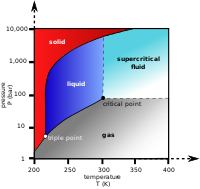
Photo from wikipedia
The increase in CO2 concentration in the atmosphere has prompted the research community to find solutions for this environmental problem, which causes climate change and global warming. CO2 removal through… Click to show full abstract
The increase in CO2 concentration in the atmosphere has prompted the research community to find solutions for this environmental problem, which causes climate change and global warming. CO2 removal through the use of negative emissions technologies could lead to global emission levels becoming net negative towards the end of this century. Among these negative emissions technologies, direct air capture (DAC), in which CO2 is captured directly from the atmosphere, could play an important role. The captured CO2 can be removed in the long term and through its storage can be used for chemical processes, allowing closed carbon cycles in the short term. For DAC, different technologies have been suggested in the literature, and an overview of these is proposed in this work. Absorption and adsorption are the most studied and mature technologies, but others are also under investigation. An analysis of the main key performance indicators is also presented here and it is suggested that more efforts should be made to develop DAC at a large scale by reducing costs and improving efficiency. An additional discussion, addressing the social concern, is indicated as well.
Journal Title: Applied Sciences
Year Published: 2022
Link to full text (if available)
Share on Social Media: Sign Up to like & get
recommendations!